
Influence of Enhanced Amino Acid Compositions on Human Cognitive Functioning
*Corresponding Author(s):
Valverde RConcordia University, Montreal, Canada
Tel:+1 5148482424, 2968
Email:raul.valverde@concordia.ca
Abstract
This study aimed to demonstrate the effect of Enhanced Amino Acid (AA) compositions on human cognitive functioning. The research study design included an open, randomized, enhanced vs non-enhanced placebo-controlled trial for 90 days. Participants in the study were measured initially, randomly divided into three groups (experimental, control, and placebo), and measured 30, 60, and 90 days later. 80 healthy people aged 35-65 (men and women) participated in the study and were randomly divided into three groups. 40 used AA composition enhanced in plasma tachyon igniton treatment (experimental), 20 people used the same AA non-enhanced composition (control), while 20 used a placebo. In the second (after 30 days), third (after 60 days), and fourth (after 90 days) tests. The results showed that using AA compositions during the longitude period significantly affected cognitive functions in particular memory, speed of reactions and attention and that AAs processed by radiation of a cold plasma had an even more substantial effect.
Keywords
Amino acids; Cognitive functions; Cold plasma; Ignitons, Memory improvement; Non-doping methods
Abbreviations
AA: Amino Acid
5-HTP : 5-Hydroxytryptophan
NADH: Nicotinamide Adenine Dinucleotide + Hydrogen
CoQ10: Coenzyme Q10
Introduction
A widely recognized fact is that Amino Acids (AAs) serve as cell signalling molecules and play a crucial role in regulating gene expression and the protein phosphorylation cascade. Moreover, AA has a crucial role as a precursor in the synthesis of hormones and low-molecular-weight nitrogenous compounds that possess significant biological significance [1,2]. Nevertheless, heightened concentrations of AA and its derivatives have been identified as causative elements in the development of neurological diseases, oxidative stress, and cardiovascular disease. Therefore, achieving an ideal equilibrium between AA intake in the diet and its circulation is of utmost importance for maintaining overall body homeostasis.
An increasing corpus of scholarly works has contributed to the emergence of a novel concept known as functional AAs. This idea refers to AAs that play a crucial role in regulating essential metabolic pathways, hence enhancing the overall well-being, survival, growth, development, lactation, and reproduction of animals [3]. AAs have a crucial role in cognitive functioning and have potential medicinal uses [4]. The inclusion of one or a combination of AA supplements in one's diet has the potential to promote overall health and enhance well-being. The utilization of 5-HTP and l-tyrosine, which are AA precursors of serotonin and dopamine respectively, has been shown to be efficacious in alleviating symptoms of low mood [5-7]. A study conducted by researchers [8] provided evidence in favour of the utilization of oral amino AA supplementation to enhance cognitive performance. Tryptophan is an essential amino acid that plays a crucial role in brain function due to its activity as a precursor for the synthesis of the neurotransmitter serotonin (5-hydroxytryptamine). Numerous studies have demonstrated the positive effects of tryptophan on cognition [9-12]. According to a study [13], the combination of the non-proteinic amino acid L-theanine and caffeine has been demonstrated to enhance focused attention during a cognitively demanding activity. According to recent research [14], it has been indicated that the consumption of the seven necessary AAs (namely leucine, phenylalanine, and lysine in granular powder form) has been associated with enhanced attention, cognitive flexibility, and psychosocial functioning. These positive effects are believed to have potential in mitigating cognitive decline (Figure 1).
Plasma is a state of matter characterized by the presence of ions and electrons. The substance in question is a gaseous state characterized by partial ionization. The composition of the substance consists of a combination of neutral atoms, atomic ions, electrons, molecular ions, and molecules in both excited and ground states. The quantity of particles present in plasma is contingent upon the gas pressure under which it was generated. The charges, both positive and negative, exhibit a state of equilibrium, resulting in a significant proportion of these charges being electrically neutral.
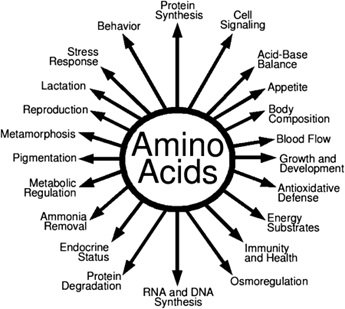 Figure 1: Roles of AA in nutrition and whole-body homeostasis [3].
Figure 1: Roles of AA in nutrition and whole-body homeostasis [3].
The utilization of cold plasma in food preparation has gained significant popularity in recent times [15]. The purpose of its application is to mitigate the occurrence of microbial contaminations [16]. There are several notable benefits associated with the extension of product shelf-life [17], enhancement of food drying performance [18], and the potential preservation or improvement of food's organoleptic and biomolecular qualities following processing [19].
This paper presents the findings from a study that examines the impact of AA compositions on human cognitive abilities, specifically focusing on the enhanced effects of AAs treated with cold plasma ignitons enhancement compared to untreated AAs.
Materials and Methods
An open, randomized, placebo-controlled trial for 90 days was conducted. Participants were measured initially, randomly divided into three groups (experimental, control, and placebo), and measured 30, 60, and 90 days later the start of the study.
Eighty adults of different sexes, ages, and professions, aged 50 +/- 14 years, participated in the study. The study included adults meeting the following criteria:
- An absence of severe chronic medical conditions
- Good mental health
- The ability to comply with the procedures set out in the inquiry protocol
There was no early abandonment of the subjects from the experiment.
Participants were randomly selected into three groups:
Group 1: 40 people consumed daily amino acid composition processed with plasma ignitons enhancement for three months.
Group 2: 20 people for three months consumed daily same amino acid composition without enhancement.
Group 3: 20 people for three months consumed daily placebo.
Initially and every month, participants had access to online computer tests that were designed to test cognitive functions. The results of the tests were evaluated and statistically processed in the SPSS program by the research team.
The amino acid composition had the following content:
- Citicoline 380 mg,
- Alfa-GPC 380 mg
- N-Acetyl L-Tyrosine 200 mg
- NADH 30 mg,
- Phosphatidylserine 100 mg,
- CoQ10 100 mg.
- Capsule made of fermented tapioca starch and distilled water.
The ethics committee of the Federal State Budget Institution "Saint-Petersburg Scientific-Research Institute for Physical Culture," St. Petersburg, Russia, approved the study protocol. All participants signed an informed consent form, where a written and oral explanation of the research protocol was provided.
Statistical Analysis
Several cognitive computer tests were designed with the objective of measuring the cognitive functions of the participants. The main cognitive functions measured were: – memory, speed of reactions, and attention. The following online computer tests were designed for this study:
- Schulte Tables test: These were designed based on German psychiatrist and psychotherapist Walter Schulte that created the Schulte Table as a psycho-diagnostic exam to evaluate attention and brain reaction. Generally, it is a grid with randomly distributed numbers or letters [20]. A Schulte table with the numbers 1 to 25 not in order was used. Participants were required to perform a task as quickly as possible and without mistakes to find and mark with the mouse all the numbers in order from 1 to 25. The number of errors (attention) and time-on task (speed of reactions) were collected as the main metrics for this test.
- Short-Term Memory test: Multi-digit numbers were presented on the screen. The task was to memorize this number and enter it into the input field. After entering, the following number was introduced, one digit longer than the previous one, which should also be remembered and entered, and so on. The maximum length of presented number (memory) and time-on task (speed of reactions) were the main metrics collected for this test after ten repetitions. Short-term memory could be defined as the memory mechanism that allows us to retain a certain amount of information over a short period of time. Short-term memory temporarily retains processed information that either fades quickly or turns into long-term memory [21].
- Thorndike's test: The Thorndike test, used by psychologists to measure attention selectivity or focus on one thing at a time, is a table with 100 three-digit numbers in random order in 10 by 10 cells and ten random numbers that the subject must find and highlight as quickly as possible. The subject should focus as much as possible on the Thorndike exam to get an objective assessment of his attention [22]. A table of 100 three-digit numbers was presented. At the top, in front of the table, there were ten three-digit numbers, which one must find and mark on the table with the mouse as quickly as possible. The response time (attention) was the main metric collected.
- Correction test with numbers: A table of a random set of 1080 numbers contained 36 lines of 30 characters each and a digit at the top. The task was to look through the table as quickly as possible and find and mark with the mouse the number indicated at the top. The objective of the test was to measure concentration. The total amount of missing numbers in the correction (attention) and time-on task test (speed of reactions) were the main metrics collected.
Results
- Overview of the final results
Table 1 presents an overview of the tests after 30 days. We can see high level of improvement of the group using Amino Acids enhanced in plasma (Igni Cognition) compared with two other groups.
|
Cognitive test |
Amino Acids enhanced (Igni Cognition) |
Amino Acids non-enhanced |
Placebo |
|
Overall memory |
100% improvement |
20% improvement |
1% improvement |
|
Short Term memory |
28% improvement |
10% improvement |
1% improvement |
|
Operational memory |
25% improvement |
14% improvement |
8% improvement |
|
Attention |
51% improvement |
0% improvement |
9% improvement |
|
Quality of performance |
83% improvement |
9% improvement |
39% improvement |
Table 1: Clinical tests results for 80 volunteers results for 30 days. Group taken enhanced Amino Acids (Igni Cognition) significantly outperformed both placebo and unenhanced supplements.
- Detailed results of the study
The initial test results and after every month are presented in tables and graphs. Tables show Number of errors in Schulte Tables test, Short-Term Memory test and Correction test with numbers that measure cognitive functions for the 3 groups in the study (enhanced, non-enhanced and placebo). Series 1 represent tests at the 0th day, series 2 at the 30th day, series 3 at the 60th day and series 4 at the 90th day. The table also contains the p values for the t-student test for a difference of the mean values over the 4 periods of time (0, 30, 60 and 90 days) in the study (T test 1-2 p value, T test 2-3 p value, T test 3-4 p value) (Figure 2).
Table 2 shows the number of errors in Shuttle tables tests for the 3 groups in the study during series 1, 2, 3 and 4. The number of errors measure the attention cognitive function (Figure 3).
|
|
Charged |
Uncharged |
Placebo |
T-test Enhanced- non-Enhanced P value |
|
Result from test 1 |
9.1 ± 2.1 |
11.2 ± 3.2 |
11.2 ± 3.6 |
0.72 |
|
Result from test 2 |
3.0 ± 0.4 |
9.1 ± 2.1 |
11.3 ± 3.1 |
0.04 |
|
Result from test 3 |
1.0 ± 0.3 |
3.0 ± 0.3 |
12.0 ± 2.7 |
<0.001 |
|
Result from test 4 |
1.0 ± 0.3 |
2.5 ± 0.2 |
11.9 ± 2.4 |
<0.001 |
|
T-test,1-2, p value |
< 0.001 |
< 0.001 |
0.96 |
|
|
T-test 2-3, p value |
< 0.05 |
< 0.001 |
0.87 |
|
|
T-test 3-4, p value |
0.99 |
0.76 |
0.84 |
|
Table 2: Number of errors in Schulte Tables (Attention).
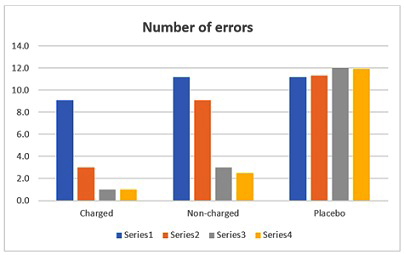 Figure 2: Number of errors in Schulte Tables for series 1 (0th day), series 2 (30th day), 3 (60th day) and series 4 (90th day).
Figure 2: Number of errors in Schulte Tables for series 1 (0th day), series 2 (30th day), 3 (60th day) and series 4 (90th day).
Table 3 shows the maximum length of presented number for the short-term memory test for the 3 groups in the study during series 1, 2, 3 and 4. This metric measures the memory cognitive function (Figure 3).
|
|
Charged |
Uncharged |
Placebo |
T-test Enhanced- non-Enhanced P value |
|
Result from test 1 |
6.5 ± 2.1 |
7.3 ± 1.9 |
7.5 ± 1.7 |
0.97 |
|
Result from test 2 |
8.6 ± 2.5 |
8.1 ± 2.6 |
7.6 ± 2.1 |
0.23 |
|
Result from test 3 |
10.3 ± 2.4 |
9.4 ± 3.0 |
7.3 ± 1.6 |
<0.001 |
|
Result from test 4 |
10.5 ± 2.6 |
9.6 ± 2.0 |
6.7 ± 2.2 |
0.05 |
|
T-test,1-2, p value |
< 0.001 |
< 0.001 |
0.84 |
|
|
T-test 2-3, p value |
< 0.001 |
< 0.001 |
0.76 |
|
|
T-test 3-4, p value |
0.76 |
0.82 |
0.09 |
|
Table 3: Short term memory (Memory).
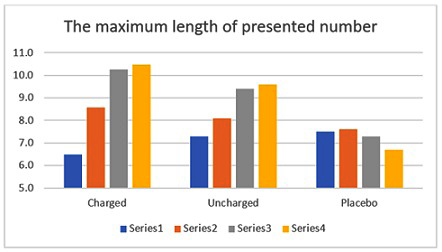 Figure 3: Short term memory (Memory) results for series 1 (0th day), series 2 (30th day), 3 (60th day) and series 4 (90th day).
Figure 3: Short term memory (Memory) results for series 1 (0th day), series 2 (30th day), 3 (60th day) and series 4 (90th day).
Table 4 shows the response time of Thorndike's test (seconds) for the 3 groups in the study during series 1, 2, 3 and 4. This metric measures the attention cognitive function (Figure 4).
|
|
Charged |
Uncharged |
Placebo |
T-test Enhanced- non-Enhanced P value |
|
|
Charged |
Uncharged |
Placebo |
T-test Charged-Uncharged |
|
Result from test 1 |
306.1 ± 67 |
327.2 ± 81 |
256.1 ± 65 |
0.56 |
|
Result from test 2 |
209.9 ± 34 |
249.7 ± 78 |
241.8 ± 63 |
0.12 |
|
Result from test 3 |
166.3 ± 36 |
192.9 ± 66 |
268.1 ± 57 |
<0.001 |
|
Result from test 4 |
121.6 ± 22 |
183.5 ± 34 |
270.0 ± 84 |
<0.001 |
|
T-test,1-2, p value |
< 0.001 |
< 0.001 |
0.86 |
|
|
T-test 2-3, p value |
< 0.001 |
< 0.001 |
0.97 |
|
|
T-test 3-4, p value |
< 0.001 |
0.08 |
0.89 |
|
Table 4: Time of Thorndike's test, seconds (Attention).
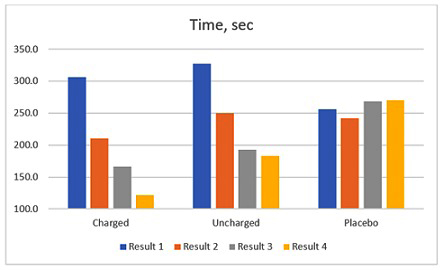 Figure 4: Response time of Thorndike's test for series 1 (0th day), series 2 (30th day), 3 (60th day) and series 4 (90th day).
Figure 4: Response time of Thorndike's test for series 1 (0th day), series 2 (30th day), 3 (60th day) and series 4 (90th day).
Table 5 shows the total amount of missing numbers in the correction test for the 3 groups in the study during series 1, 2, 3 and 4. This metric measures the attention cognitive function (Figure 5).
|
|
Charged |
Uncharged |
Placebo |
T-test Enhanced- non-Enhanced P value |
|
Result from test 1 |
19.1 ± 2.3 |
18.2 ± 3.1 |
18.6 ± 2.6 |
0.67 |
|
Result from test 2 |
14.2 ± 2.1 |
16.0 ± 2.3 |
18.0 ± 2.3 |
0.06 |
|
Result from test 3 |
11.0 ± 1.9 |
15.0 ± 1.8 |
19.0 ± 3.1 |
<0.001 |
|
Result from test 4 |
9.0 ± 1.8 |
14.0 ± 1.7 |
19.0 ± 2.9 |
<0.001 |
|
T-test,1-2, p value |
< 0.001 |
< 0.001 |
0.09 |
|
|
T-test 2-3, p value |
< 0.001 |
< 0.001 |
0.08 |
|
|
T-test 3-4, p value |
< 0.001 |
< 0.001 |
0.96 |
|
Table 5: total amount of missing numbers in the correction test (Attention).
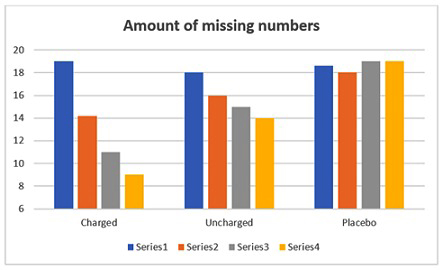 Figure 5: total amount of missing numbers in the correction test for series 1 (0th day), series 2 (30th day), 3 (60th day) and series 4 (90th day).
Figure 5: total amount of missing numbers in the correction test for series 1 (0th day), series 2 (30th day), 3 (60th day) and series 4 (90th day).
Discussion
According to the Tables, the presented results show that an intake of AAs (Enhanced and non-Enhanced) has a positive effect in the memory function.
Intake of charged AAs has a positive effect in the speed of reactions function and this effect is present in the 60 to 90 days measurement while the effect of uncharged AAs reaches its maximum effect at 60 days. This last suggests that charged AAs have a more potential positive effect than uncharged AAs.
The Schulte tables test shows that that an intake of AAs (charged and uncharged) has a positive effect in the attention function, but this positive effect reaches its threshold at 60 days. However, Thorndike's test presents that an intake of charged AAs has a positive effect in the attention function and this effect is present in the 60 to 90 days measurement while the effect of uncharged AAs reaches its maximum effect at 60 days suggesting that charged AAs have a more potential positive effect than uncharged AAs. The difference of the results for both tests might be attributed to the better performance of the Thorndike's test to test attention [23].
While presented results demonstrate positive effect in cognitive functions for the intake of AAs in both combinations, the placebo group results practically did not change. This testifies that regular intake of the amino acid combinations positively affected cognitive function – memory, speed of reactions, and attention.
Amino acid enhanced by the cold plasma igniton/tachyon “charged” had an even more substantial effect, which correlates with the published data on food processing [15-19].
From all the results it is possible to see that for enhanced AAs to have better effect than uncharged AAs for memory, it takes at least 60 days. The results also show that the improvement because of the use of charged AAs continues after 90 days.
Enhanced AAs have better effect than uncharged AAs for speed of reactions after 30 days, but this effect reaches its maximum at 60 days and then stops being significant at 90 days.
As for the attention function, charged AAs have better performance than uncharged AAs after 30 days according to Schulte tables test but only after 60 days according to Thorndike's and Correction tests. The difference of the results for both tests might be attributed to the better performance of the Thorndike's test to test attention [23].
Results demonstrate better performance of enhanced AAs against non-enhanced AAs. One possible explanation for this additional solid effect of enhanced supplements on cognitive functions compared to intact supplements could be that cold plasma emits electromagnetic waves in a broad spectrum range, with emission peaks in the ultraviolet range [24]. At the same time, clinical effects were demonstrated not only by the radiation but also by fluids treated with this radiation [25,26]. In the food industry and medicine, the effect of irradiation of drugs in cold plasma is considered in terms of antimicrobial impacts; that is, it is an energy effect mainly due to high-energy ultraviolet photons. Our results cannot be considered from this point of view since this would mean introducing some additional properties in the structure of a substance, which are preserved for a long time. That is, additional hypotheses are required to explain the effects obtained. This suggests that in addition to the energetic impact of radiation, other mechanisms may be involved in the observed effects.
There are hypotheses that plasma radiation can generate a particular type of non-electromagnetic field - known as a tachyon or scalar field [27,28]. This field is associated with hypothetical particles - tachyons or ignitons, which have a size comparable to neutrinos and move at speed above the speed of light.
Presented results clearly demonstrate that the tests were better every month in both groups using amino acid combinations, while in the placebo group results practically did not change. This testifies that regular intake of the amino acid combinations positively affected cognitive function – memory, speed of reactions, and efficiency of information processing. Amino acid enhanced by the radiation of a cold plasma had an even more substantial effect, which correlates with the published data on food processing [29-33].
One wants to understand the reason for the significant effect after 30 days (see the Table 1) of enhanced supplements on cognitive functions compared to unenhanced supplements. This correlates with the hypotheses that plasma radiation can generate a particular type of non-electromagnetic field (or quasi-particles) - known as ignitons, related to tachyon or scalar field [34,35]. This field is associated with hypothetical quasi-particles - ignitons or tachyons, which have a size and speed comparable to neutrinos. Gerald Feinberg coined the term tachyon in 1967. He studied the kinematics of such particles according to special relativity. In his paper, he also introduced fields with imaginary mass (now referred to as tachyons) to understand the microphysical origin of such particles. Although in some theories, the mass of tachyons is regarded as imaginary, in some modern formulations, the mass is considered real, the formulas for the momentum and energy being redefined to this end. Moreover, since tachyons are constrained to the space-like portion of the energy–momentum graph, they could not slow down to subluminal (meaning slower-than-light) speeds. In 1985, Chodos proposed that neutrinos can have a tachyonic nature [36].
- Limitation of the study
One limitation of this study is its lack of generalizability since it involved only one set of data. Many critics question the academic value of the case study method as they argue that the finding or results can not be generalized [34]. The limitations of this study include the sample size since we are using convenience sampling and this can compromise the accuracy of the results.
Longer period of times for the AAs intake would also be beneficial to find the thresholds for the positive effect for usage recommendation purposes.
Conclusion
Regular intake of AA compositions during the longitude period significantly affected cognitive functions: memory, speed of reactions, and attention. Amino acids enhanced in a cold plasma ignitons had an even more substantial effect and significantly faster, which may be interpreted as introducing additional properties into the substance of a substance itself.
Future research can be conducted to confirm this hypothesis with further studies of the structural properties of the preparations before and after irradiation.
References
- Wu G (2019) Amino acids: metabolism, functions, and nutrition. Amino Acids 37: 1-7.
- Du MZ, Liu S, Zeng Z, Alemayehu LA, Wei W, et al. (2018) Amino acid compositions con-tribute to the proteins’ evolution under the influence of their abundances and genomic GC content. Scientific Reports 8: 7382.
- Wu G (2013) Functional amino acids in nutrition and health. Amino Acids 45: 407-411.
- Shaw KA, Turner J, Del Mar C, Cochrane Common Mental Disorders Group (1996) Tryptophan and 5-Hydroxytryptophan for depression. Cochrane Database of Systematic Reviews 2010.
- Hinz M, Stein A, Uncini T (2020) A Pilot Study Differentiating Recurrent Major Depression from Bipolar Disorder Cycling on the Depressive Pole [Retraction]. Neuropsychiatr Dis Treat 9: 741-747.
- Kohlstadt I, Hopkins MJ, Hinz M (2009) Food and Nutrients in Disease Management. CRC Press.
- Rondanelli M, Opizzi A, Antoniello N, Boschi F, Iadarola P, et al. (2011) Effect of essential amino acid supplementation on quality of life, amino acid profile and strength in institutionalized elderly patients. Clin Nutr 30: 571-577.
- Negro DRW, Aquilani R, Bertacco S, Boschi F, Micheletto C, et al. (2010) Comprehensive effects of sup-plemented essential amino acids in patients with severe COPD and sar-copenia. Monaldi Arch Chest Dis 73: 25-33.
- Murphy F, Smith K, Cowen P, Robbins T, Sahakian B (2002) The effects of tryptophan depletion on cognitive and affective processing in healthy volunteers. Psychopharmacology (Berl) 163: 42-53.
- Strasser B, Gostner JM, Fuchs D (2016) Mood, food, and cognition: role of tryptophan and ser-otonin. Curr Opin Clin Nutr Metab Care 19: 55-61.
- Markus CR, Olivier B, de Haan EH (2022) Whey protein rich in α-lactalbumin increases the ratio of plasma tryptophan to the sum of the other large neutral amino acids and improves cognitive performance in stress-vulnerable subjects. Am J Clin Nutr 75: 1051-1056.
- Schmitt JA, Jorissen BL, Sobczak S, van Boxtel MP, Hogervorst E, et al. (200) Tryptophan de-pletion impairs memory consolidation but improves focussed attention in healthy young volunteers. J Psychopharmacol 14: 21-29.
- Giesbrecht T, Rycroft JA, Rowson MJ, De Bruin EA (2010) The combination of L-theanine and caffeine improves cognitive performance and increases subjective alertness. Nutr Neurosci 13: 283-290.
- Suzuki H, Yamashiro D, Ogawa S, Kobayashi M, Cho D, et al. (2020) Intake of seven essential amino acids improves cognitive function and psychological and social function in middle-aged and older adults: a double-blind, randomized, placebo-controlled trial. Front Nutr 7: 586166.
- Gao G, Wu J, Wei Z, Li X (2023) Effects of low - pressure radio - frequency cold plasma on the biochemical parameters and fatty acid profile of wheat flours. Cereal Chemistry 100: 393-413.
- Schnabel U, Niquet R, Schlüter O, Gniffke H, Ehlbeck J (2015) Decontamination and sensory properties of microbiologically contaminated fresh fruits and vegetables by microwave plasma processed air (PPA). Journal of Food Processing and Preservation 39: 653-662.
- Pan Y, Cheng JH, Sun DW (2019) Cold plasma - mediated treatments for shelf life extension of fresh produce: A review of recent research developments. Comprehensive Reviews in Food science and Food safety 18: 1312-1326.
- Du Y, Yang F, Yu H, Xie Y, Yao W (2022) Improving food drying performance by cold plasma pretreatment: A systematic review. Comprehensive Reviews in Food Science and Food Safety 21: 4402-4421.
- López M, Calvo T, Prieto M, Vidal RM, Fraguas IM, et al. (2019) A review on non-thermal atmospheric plasma for food preservation: Mode of action, determinants of effectiveness, and applications. Frontiers in microbi-ology 10: 622.
- Hramov A, Frolov N, Grubov V, Pitsik E, Maksimenko V (2020) Network Structure of Chil-dren’s Brain During Schulte Table Task. In2020 International Conference Nonlinearity. Information and Robotics (NIR) 3: 1-2.
- Crowder RG (1982) The demise of short-term memory. Acta Psychologica 50: 291-323.
- Thorndike RL (1971) Concepts of culture = fairness. Journal of Educational Measurement 8: 63-70.
- Kireeva L, Kaverzneva T, Tarkhov D, Belina N (2018) Research of professional suitability in construction by the noise factor. InMATEC Web of Conferences 245: 03012.
- Capitelli M, Colonna G, D'Angola A (2012) Fundamental aspects of plasma chemical physics. Springer, USA.
- Tampieri F, Canal C, Labay C, Tornin J, Ginebra MP (2021) Evaluation on the effects of cold atmospheric plasma and plasma-treated liquids in cancer cell cultures. Nature protocols (Online) 16: 2826-2850.
- Brun P, Bernabè G, Marchiori C, Scarpa M, Zuin M, et al. (2018) Antibacterial efficacy and mechanisms of action of low power atmospheric pressure cold plasma: membrane permeability, biofilm penetration and antimicrobial sensitization. Journal of applied microbiology 125: 398-408.
- Chashchina O, Silagadze Z (2022) Relativity 4-ever? Physics 4: 421-439.
- Alväger T, Kreisler MN (1968) Quest for faster-than-light particles. Physical Review 171: 1357.
- Gao G, Wu J, Wei Z, Li X (2022) Effects of low - pressure radio - frequency cold plasma on the biochemical parameters and fatty acid profile of wheat flours. Cereal Chemistry 110: 393-413.
- Schnabel U, Niquet R, Schlüter O, Gniffke H, Ehlbeck J (2015) Decontamination and sensory properties of microbiologically contaminated fresh fruits and vegetables by microwave plasma processed air (PPA). Journal of Food Processing and Preservation 39: 653-662.
- Pan Y, Cheng J, Sun D (2019) Cold Plasma-Mediated Treatments for Shelf Life Extension of Fresh Produce: A Review of Recent Research Developments. Comprehensive Reviews in Food Science and Food Safety 18: 1312-1326.
- Du Y, Yang F, Yu H, Xie Y, Yao W (2022) Improving food drying performance by cold plasma pretreatment: A systematic review. Comprehensive Reviews in Food Science and Food Safety 21: 4402-4421.
- López M, Calvo T, Prieto M, Vidal RM, Fraguas IM, et al. (2019) A review on non-thermal atmospheric plasma for food preservation: Mode of action, determinants of effectiveness, and applications. Frontiers in Microbiology 10: 1-21.
- Bell J (1992) “Doing your research project”. Milton Keynes: Open University Press, Hungary.
- Feinberg G (1967) Possibility of faster-than-light particles. Physical Review 159: 1089-1105
- Chodos A (1985) The neutrino as a tachyon. Physics Letters B 150: 431-435
Citation: Valverde R, Gavrilova E, Churganov O, Starchenko, Korotkov K (2023) Influence of Enhanced Amino Acid Compositions on Human Cognitive Functioning. J Altern Complement Integr Med 9: 377.
Copyright: © 2023 Valverde R, et al. This is an open-access article distributed under the terms of the Creative Commons Attribution License, which permits unrestricted use, distribution, and reproduction in any medium, provided the original author and source are credited.

